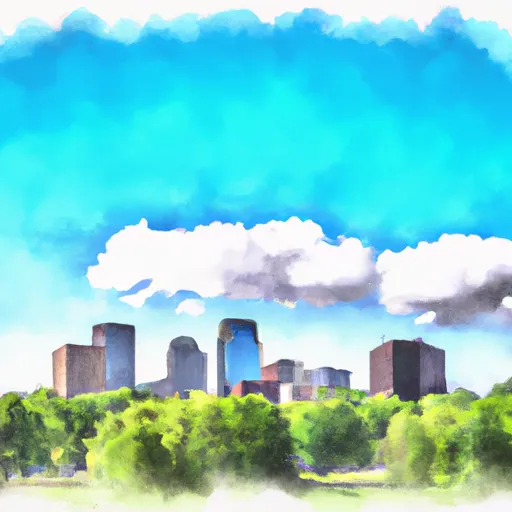-
 Snoflo Premium
Snoflo Premium
Get unlimited access to all our content
With no Ad interruptions! - Start Your Free Trial Login with existing account
Lake-Park
Eden Index
Climate
5.1
•
Recreation
1.7
•
Community
0.9
•
Safeguard
2.9/10

Lake Park is a small town located in Becker County, Minnesota. It experiences a continental climate characterized by cold winters and warm summers. The average temperature in winter ranges from 5°F to 20°F (-15°C to -6°C), while in summer, it ranges from 60°F to 80°F (15°C to 27°C). Precipitation is evenly distributed throughout the year, with an average annual rainfall of 25 inches (64 cm) and snowfall of 50 inches (127 cm).
The town is surrounded by several lakes, making it a hydrologically significant area. Lake Park sits on the eastern shore of Upper Cormorant Lake, providing residents and visitors with stunning water views and recreational opportunities. The lake is excellent for fishing, with species like walleye, bass, and panfish abundant in its waters. Boating, swimming, and water sports are also popular activities during the summer months.
Additionally, Lake Park has access to nearby trails and parks, including the Lake Park City Park and the Tamarac National Wildlife Refuge. These areas offer opportunities for hiking, birdwatching, and wildlife observation. Overall, Lake Park provides a picturesque environment for outdoor enthusiasts, with a variety of recreational activities suitable for all seasons.
What is the Eden Index?
The Snoflo Eden Index serves as a comprehensive rating system for regions, evaluating their desirability through a holistic assessment of climate health, outdoor recreation opportunities, and natural disaster risk, acknowledging the profound impact of these factors on livability and well-being.
Climate Health Indicator (CHI): 5.1
Lake-Park receives approximately
621mm of rain per year,
with humidity levels near 83%
and air temperatures averaging around
5°C.
Lake-Park has a plant hardyness factor of
3, meaning
plants and agriculture in this region thrive during a short period during spring and early summer. Most
plants will die off during the colder winter months.
By considering the ideal temperature range, reliable water supplies, clean air, and stable seasonal rain or snowpacks, the Climate Health Indicator (CHI) underscores the significance of a healthy climate as the foundation for quality living.
A healthy climate is paramount for ensuring a high quality of life and livability in a region, fostering both physical well-being and environmental harmony. This can be characterized by ideal temperatures, reliable access to water supplies, clean air, and consistent seasonal rain or snowpacks.
Weather Forecast
Streamflow Conditions
Upper Red
Area Rivers
Upper Red
Snowpack Depths
Upper Red
Reservoir Storage Capacity
Upper Red
Groundwater Levels
Recreational Opportunity Index (ROI): 1.7
The Recreational Opportunity Index (ROI) recognizes the value of outdoor recreational options, such as parks, hiking trails, camping sites, and fishing spots, while acknowledging that climate plays a pivotal role in ensuring the comfort and consistency of these experiences.
Access to outdoor recreational opportunities, encompassing activities such as parks, hiking, camping, and fishing, is crucial for overall well-being, and the climate plays a pivotal role in enabling and enhancing these experiences, ensuring that individuals can engage in nature-based activities comfortably and consistently.
Camping Areas
| Campground | Campsites | Reservations | Toilets | Showers | Elevation |
|---|---|---|---|---|---|
| Heiberg Park | None | 1,019 ft | |||
| Maplewood State Park | 70 | 1,418 ft | |||
| Rothsay City Park | None | 1,211 ft | |||
| Delagoon Rec Area | 36 | 1,222 ft | |||
| Strathcona City Park | None | 1,136 ft | |||
| Sherin Memorial City Campground | None | 1,325 ft | |||
| Durgin Memorial Park | None | 1,069 ft | |||
| Middle River Park | 12 | 1,140 ft | |||
| Legion Park | 15 | 1,070 ft |
Nearby Fishing
Catastrophe Safeguard Index (CSI):
The Catastrophe Safeguard Index (CSI) recognizes that natural disaster risk, encompassing floods, fires, hurricanes, and tornadoes, can drastically affect safety and the overall appeal of an area.
The level of natural disaster risk in a region significantly affects safety and the overall livability, with climate change amplifying these risks by potentially increasing the frequency and intensity of events like floods, fires, hurricanes, and tornadoes, thereby posing substantial challenges to community resilience and well-being.
Community Resilience Indicator (CRI): 0.9
The Community Resilience Indicator (CRI) recognizes that education, healthcare, and socioeconomics are crucial to the well-being of a region. The CRI acknowledges the profound impact of these elements on residents' overall quality of life. By evaluating educational resources, healthcare accessibility, and economic inclusivity, the index captures the essential aspects that contribute to a thriving community, fostering resident satisfaction, equity, and social cohesion.

